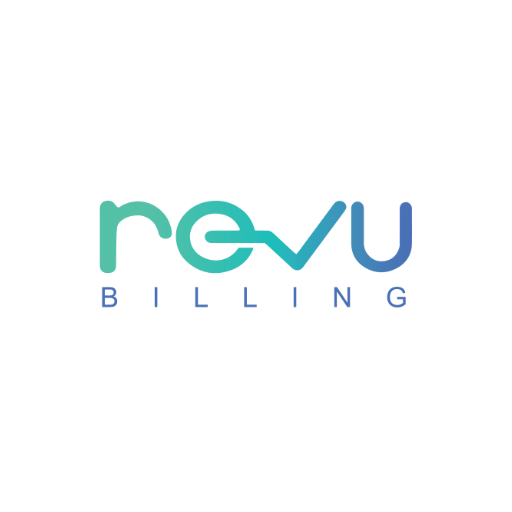Dental billing code and practices
CDT codes Do you realise that the complicated dental billing code and practices procedure has affected the dental field just like other branches of medicine? The complication comes in the ability to code procedures to get timely reimbursements. Dental billing services, unlike many other medical billing procedures, involves many codes to gain a comprehensive grasp of dental coding, which is frequently tricky and essentially most of the time.
If you’re familiar with medical coding, you’ll be familiar with CPT codes (Current Procedural Terminology), upon which medical procedures are based. However, dental coding relies on Current Dental Terminology (CDT). It is the form of coding created and administered by the American Dental Association. These codes store information about different dental operations and are used to reimburse dental claims.
What is CDT Code In Dental Billing Code And Practices
Each dental operation has its unique CDT code utilized across the dentistry profession. Codes for dental procedures (CDT codes) are alphanumeric keys that always begin with the letter D (likely to indicate the dentistry sector). Some dental treatments have their own unique set of CDT codes. Whenever a dental procedure is performed, these codes are taken into account. The following are some of the services offered:
- Preventive
- Diagnostic
- Periodontics
- Restorative
- Removable Prosthodontics
- Endodontics
- Maxillofacial Prosthetics
- Implant Services
- Oral and Maxillofacial Surgery
- Fixed Prosthodontics
- Adjunctive General Services
- Orthodontics
Importance of Dental Billing Code and practice
Knowing if you’ll be using CPT or CDT codes is crucial. Understanding the nature of the services provided is essential for making appropriate code selections. The patient’s insurance information, including the types of claims that can be made, is also necessary. If the patient has dental insurance, get all the details about how much the procedure will cost. Otherwise, the financial burden falls on them.
In general, those working in the healthcare industry have access to three distinct forms of insurance:
- Vision
- Dental
- Medical
Dental coding processes employ CDT codes to charge the service regardless of whether the claims are submitted in or out-of-network or via electronic transmissions that are HIPAA compliant. To charge dental treatments to third-party or government-assigned insurance companies, dentists must use the currently accepted dental terminologies controlled at the federal level. These CDT numbers help identify specific dental operations and are required for any department-wide communication involving dental services.
Why CPT Codes Are Necessary For Dental Billing Critical:
The patient who came for a dental procedure must have dental insurance to use CDT codes for dental coding and claiming reimbursements. If the health insurance does not cover dental insurance, the insurance provider will deny paying for the claims even if they possess medical insurance. Patients often think that their medical insurance will cover their dental expenses too, but the information surprises them when the shares are denied.
Dental practitioners must pay close attention to the insurance coverage that the patients hold. Occasionally, dental procedures are performed mainly according to the patient’s medical conditions. This way, patients can bill the insurance company, convincing them of the need for dental treatment.
But it is challenging to convince insurance companies to reimburse for the services they do not cover even if they find out that the billed amount was made under the specific and standard CDT codes.
For instance, if a patient builds up a cyst or fungus in the gums and has to go through a procedure in the provider’s office, the system can either be billed as medical or dental.
However, depending on the bills, the medical and dental coding for the same procedure differs. The CDT dental code for drainage of abscesses of intraoral soft tissue and incision is D7510, and the medical coding for the same process is 41800.
This means that the bills for the same procedure can be submitted under either medical or dental billing. In addition, they can also visit the dental or medical office to receive treatment. But depending on billing, either dental or medical, the claims will be submitted to the relevant insurance companies.
Usually, medical insurance companies do not cover procedures containing treatments regarding teeth. The coverage clearly states that no system will be catered in connection with teeth, including removal or replacement, filling, or dental care and no amount will be reimbursed to the dentist or the patient.
Generally, medical coverages from insurance companies often cover dental implants and surgical issues. For this, a dental claim would be submitted, but if denied, they can opt for a medical claim as another option.
When submitting a claim, how do I handle CDT codes?
The dental claims form and the medical coding form would be different if you submitted the claims for a procedure requiring both coding types. Dental billing code and practices will use the J400 form if the medical claim form 1500 is used for the operation.
Both forms for filing a claim are structured so that only necessary details must be filled in. Some of the data includes;
- The Oral Habitat in Terms of the Teeth
- Numbers or letters representing teeth
- Data on tooth loss
- Methodology explanation
- Dental enamel
- The data should be included in the dental paperwork and other pertinent details. The form may also ask for information about any specialized care you receive.
The Most Recent Changes to the CDT Dental Codes
At their annual March meeting, the members of the American Dental Association vote on the dental codes to be used in the coming year. In 2020, the American Dental Association (ADA) changed roughly 156 codes and added 37 new dental codes as the world battled the COVID-19 epidemic. Six previously eliminated dental principles have been reinstated, and five others have been updated to align with the CDT dental coding requirements of 2020.
Numerous CDT codes for 2020 have been assigned to every particular intervention. New dental regulations mandate their use during specialized treatments for people with unique dental care requirements. Coding for medical or dental services remains crucial for billing and claims submission. However, doctors and dentists benefit from correct and consistent medical coding when filing claims and keeping records.
If dental claims are made in a timely presented, they help in continuing payouts against dental claims without any delays. Claim denials will be less likely if people are informed of the revisions and can be assured that they comply.
New Codes for dental coding:
- D0419 Measuring saliva production for quality control purposes.
- A unilateral removable partial denture (D5284) with a flexible one-piece base, clasps, and teeth in each quadrant.
- Code D2753 designates titanium and titanium alloys.
- D5286 is a removable, unilateral, complete denture with clasps and teeth in one resin piece for each of the four quadrants.
- The appropriate CPT code is the crown-supported implants with porcelain fusing mainly base alloys (D6082).
- The D6083 designation indicates dental implants with a porcelain fused to a noble metal alloy crown.
- Crown, porcelain fused to titanium, or titanium alloy implants are classified as D6084.
- D6086 is for implants with a crown; the alloys used for the crown are primarily base metals.
- D6087: a crown of noble metals and implants.
Why Dental billing codes and practices are vital?
Correct dental coding is essential for receiving fair compensation from insurance providers. Dentists and their employees often need help navigating PPO and HMO dental policies. To limit their financial exposure, dental insurance companies continually revise and add new approaches to the plans they offer.
Any dental office with a signed contract with a dental plan is considered in-network and must adhere to the plan’s fee structure. When a dental office signs such a contract, it follows the plan’s terms. The dentist and the patient won’t always come out on top while following the regulations. Dentists enter these contracts with the expectation of expanding they’re practices and thriving due to the high quality of treatment they provide to their patients, only to be disappointed by insurance providers.
Insurers are reluctant to deal with you since you need to meet their stringent requirements for things like frequency of service and number of claims. When these obstacles persist, they might prevent patients from receiving the necessary care. As a result, insurance companies decide what medical care is needed and what services they will cover. The question that may arise is whether or not these corporations are looking out for the best interests of their members or their stockholders.
Almost every business is under pressure to deliver quarterly earnings that exceed analyst forecasts. In a shared business model, increasing membership and decreasing costs are the only viable options for achieving this. Because the strategy reduces payments to dental offices, the business keeps a larger share of the insurance premiums paid by its members. These dental plans‘ policies are sometimes too expensive for their members and in-network dentists, leading to refused claims and subpar care.
Because of this, accurate dental coding is crucial. Each incorrectly coded claim and misdirected employee is a gain for the insurance provider. Thus, Revu Billing is all here to make it smooth for you.




